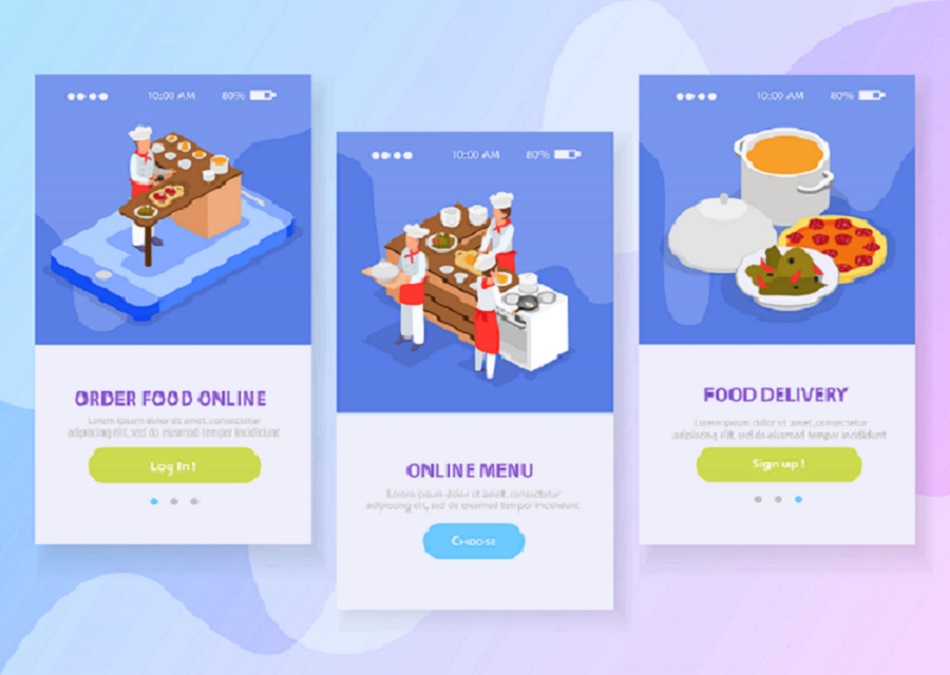In the fast-paced and ever-evolving landscape of the restaurant industry, staying ahead of the competition is crucial. One of the game-changers in recent times has been the adoption of Web Applications for Restaurant Ordering. This innovative technology is reshaping the way restaurants operate, enhancing efficiency, customer experience, and overall profitability.
The Rise of Web Apps in the Restaurant Industry
The traditional model of customers physically visiting a restaurant or calling to place an order is gradually becoming obsolete. The digital era has ushered in a new wave of convenience, and web apps for restaurant ordering are at the forefront of this transformation.
These web applications provide a seamless and user-friendly platform for customers to browse menus, place orders, and even make customized requests, all from the comfort of their homes or on the go. For restaurants, this shift represents not just a change in technology but a fundamental shift in the way they connect with their customers.
Key Benefits of Web Apps for Restaurant Ordering
1. Enhanced Customer Experience:
Web apps offer an intuitive interface that allows customers to explore menus, customize orders, and review options at their own pace. The ease of use contributes to an overall enhanced customer experience, fostering loyalty and repeat business.
2. Increased Operational Efficiency:
Traditional phone orders can be prone to misunderstandings and errors. Web apps streamline the ordering process, reducing the chances of mistakes and ensuring that orders are accurate. This, in turn, enhances the operational efficiency of the restaurant.
3. Order Customization and Special Requests:
Web apps empower customers to tailor their orders to their specific preferences. Whether it's modifying toppings, specifying cooking instructions, or requesting special dietary accommodations, these platforms cater to individual needs, making the ordering process more personalized.
4. Real-Time Menu Updates:
Restaurants can easily update their menus in real-time, reflecting changes in availability, pricing, or special promotions. This dynamic feature ensures that customers always have access to the most accurate and up-to-date information.
5. Integration with Payment Systems:
Seamless integration with various payment methods simplifies the checkout process for customers. This not only saves time but also reduces the reliance on traditional cash transactions, making the entire ordering experience more secure.
6. Data-Driven Insights:
Web apps generate valuable data and analytics that can be leveraged to understand customer preferences, track popular menu items, and identify trends. This data-driven approach enables restaurants to make informed decisions to optimize their offerings and marketing strategies.
Success Stories: Restaurants Thriving with Web Apps
Several restaurants have witnessed remarkable success after implementing web apps for their ordering systems. One such example is "Gourmet Delights," a local eatery that saw a significant increase in order volume and customer satisfaction.
By providing a user-friendly web app, Gourmet Delights transformed the way customers interacted with their menu. The ability to make customizations and place orders effortlessly led to a surge in repeat business. The real-time updates on promotions and menu changes also kept customers engaged and informed.
Furthermore, the data collected through the web app allowed Gourmet Delights to identify popular dishes, optimize their inventory, and tailor marketing campaigns to specific customer segments. The result was not just increased revenue but a more streamlined and efficient operation.
Overcoming Challenges in Implementation
While the benefits of web apps for restaurant ordering are evident, the implementation process may pose some challenges. Here are a few key considerations to ensure a smooth transition:
1. User-Friendly Design:
The success of a web app hinges on its usability. A well-designed interface that is intuitive and easy to navigate is crucial for ensuring customer satisfaction.
2. Integration with Existing Systems:
Restaurants often have existing point-of-sale (POS) systems and other backend operations. Seamless integration with these systems is essential to avoid disruptions in the overall workflow.
3. Security Measures:
Given the sensitive nature of payment information, robust security measures must be in place to protect customer data. SSL encryption, secure payment gateways, and regular security audits are essential components of a secure web app.
4. Staff Training:
The restaurant staff should be adequately trained to handle the new system. From order processing to managing online inquiries, staff members need to be comfortable with the web app's functionalities.
Future Trends and Innovations
As technology continues to evolve, the future holds even more exciting possibilities for web apps in the restaurant industry. Here are some emerging trends:
1. AI-Powered Recommendations:
Integrating artificial intelligence (AI) into web apps can enable personalized recommendations based on a customer's order history, preferences, and trending menu items.
2. Voice-Activated Ordering:
With the rise of virtual assistants and smart speakers, voice-activated ordering is poised to become a game-changer. Customers can simply speak their orders, making the process even more convenient.
3. Augmented Reality (AR) Menus:
AR menus can provide customers with a virtual experience, allowing them to see realistic representations of dishes before placing an order. This immersive approach enhances the visual aspect of the ordering process.
4. Contactless Dining:
In the wake of global events, the demand for contactless solutions has increased. Web apps can evolve to incorporate features such as contactless payment, digital menus, and online feedback forms to enhance safety and hygiene.
Conclusion
The adoption of Web Apps for Restaurant Ordering marks a significant shift in the industry, bringing about improvements in customer experience, operational efficiency, and overall profitability. As restaurants continue to embrace technology, the potential for innovation and growth is limitless.
By staying ahead of the curve and leveraging the power of web applications, restaurants can not only meet the evolving demands of their customers but also set new standards for excellence in the competitive world of dining. The journey towards a digital future has just begun, and web apps are paving the way for a more connected, efficient, and enjoyable dining experience for both customers and restaurateurs alike.





Comments